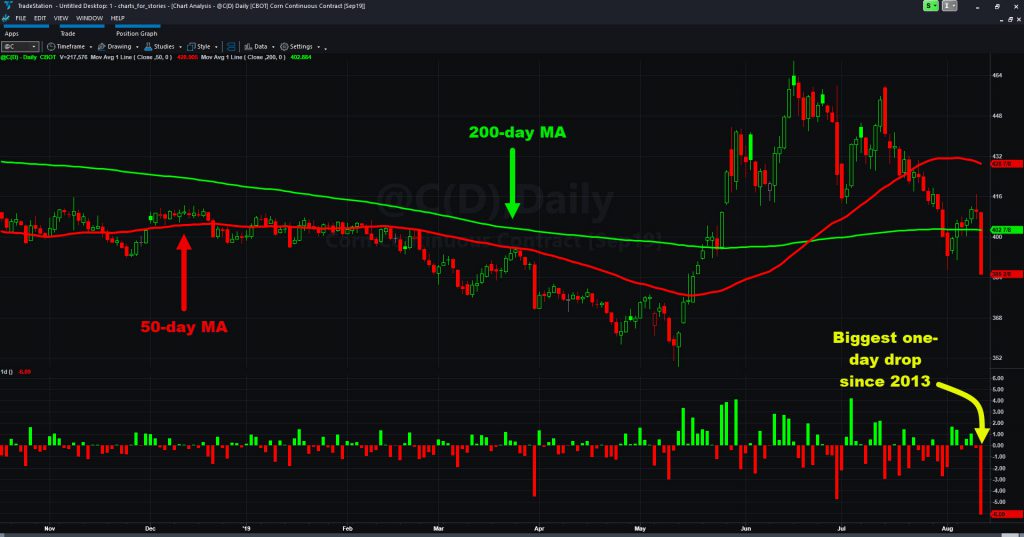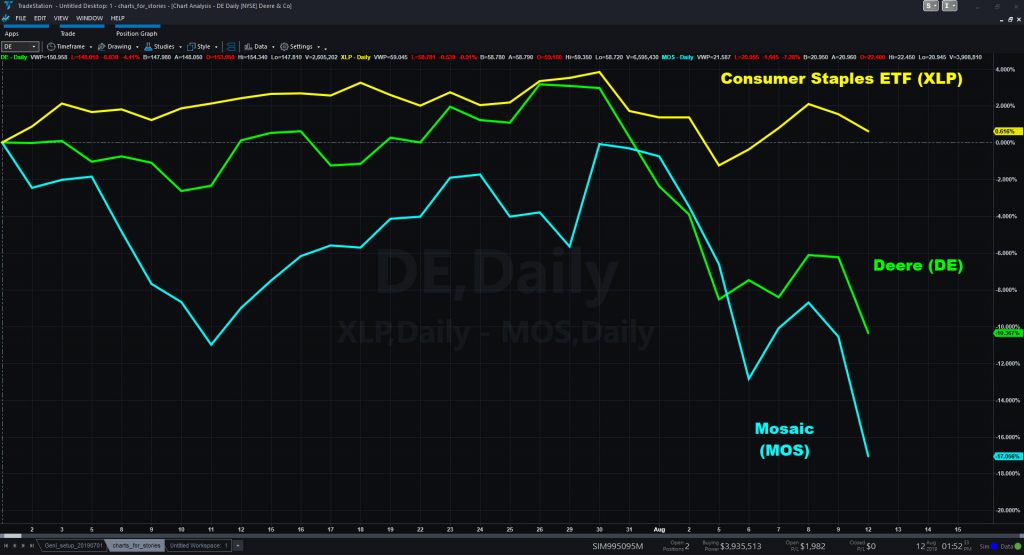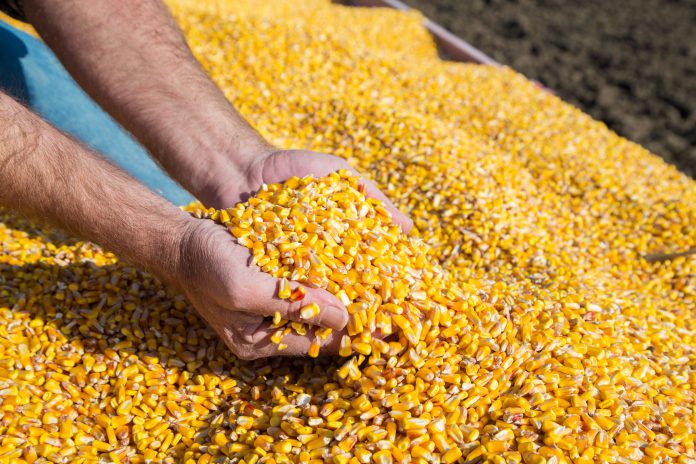Grains are crashing on signs of a worsening commodity glut.
CBOT Corn Futures (@C) dropped more than 6 percent halfway through Monday’s session. The last time it fell that much was April 1, 2013, according to TradeStation’s historical data. Wheat (@W) is down a similar amount — its worst day in at least 16 years.
Farmers should expect, “larger supplies, reduced exports and corn used for ethanol, and greater ending stocks,” the U.S. Department of Agriculture said in a report. The prediction was partially based on satellite photos showing strong production. That stunned traders who thought the rainy spring would hurt output.
The selloffs come at a rough time for farmers as China halts grain imports in response to President Trump’s tariffs. It’s not immediately clear how much of today’s bad news results from the trade war. Soybeans (@S), the main product China buys, are own only 1.5 percent.

Farming Stocks Follow Grains
Companies associated with farming also took a hit on the news:
- Deere (DE): The tractor giant fell almost tick-by-tick with @C and currently down more than 4 percent.
- Corteva (CTVA): The fertilizer maker only became an independent company in May after emerging from the Dow Chemical and DuPont reshuffling. It crashed more than 6 percent.
- CF Industries (CF) and Mosaic (MOS): The fertilizer makers declined 4 percent and 6 percent respectively.
- Bunge (BG): The grain processor is on pace for its worst day since October, down almost 6 percent.
Most traders have likely ignored grains and agriculture, especially with high-profile technology stocks dominating headlines. However, this kind of movement and news could draw attention to the sector. Market Insights will also keep an eye on options activity — common indicator of increased trading.
There are two other possible results from the decline in grain prices. First, it keeps downward pressure on inflation and could justify the Federal Reserve keeping interest rates lower for longer.

Second, cheaper corn and wheat could boost margins for packaged-food companies. That, combined with concerns about the economy, could give investors one more reason to focus on consumer staples. Did you know the S&P Select Consumer Staples Fund (XLP) XLP is outperforming the broader market by a wide margin so far this quarter?
In conclusion, equity traders often ignore agricultural products. But the current mix of news and price action is especially bearish. It’s worth knowing about because the moves will likely to trickle through to the stock market down the road.




























